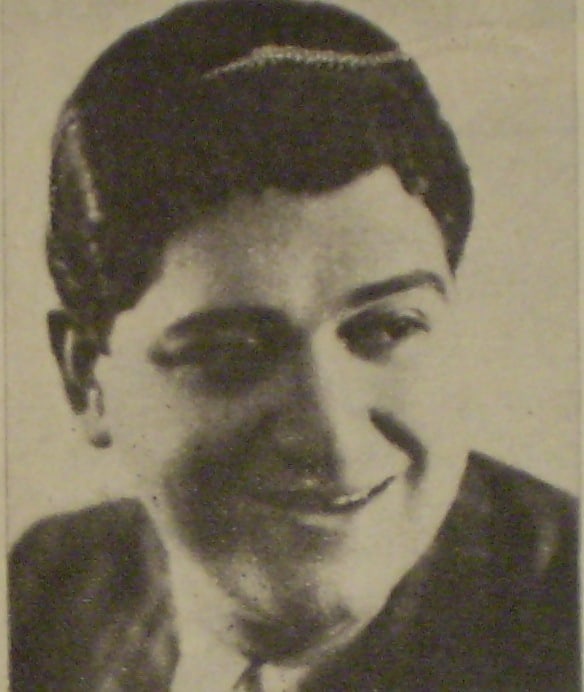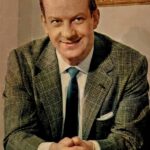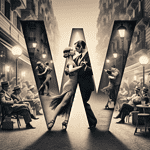Life and Career of Francisco Fiorentino
Francisco Fiorentino (1905-1955) was an Argentine tango singer who reached great popularity during the golden age of tango in the 1940s. With his warm, sensitive voice and emotional delivery, Fiorentino was one of the era’s most beloved and authentic interpreters of tango. He started as a modest singer in cafes before joining orchestras like Aníbal Troilo’s and recording hits like “Cuesta Abajo” and “Romance de Barrio.” Fiorentino conveyed the essence of the tango song with refinement and spontaneity. His early death from an accident at age 50 added to his legendary status.
Francisco Fiorentino, born on September 23, 1905, in Buenos Aires’ San Telmo district, was not just a singer but a tango visionary. He commenced his musical journey as a bandoneon player, influenced by his brother Vicente and his teacher Minotto Di Cicco. His early gigs in various orchestras, including that of Francisco Canaro, unveiled his dual talent as a bandoneonist and refrain singer. This versatility set the stage for his eventual rise as a prominent tango vocalist.
Joining Aníbal Pichuco Troilo’s orchestra in 1937, Fiorentino blossomed into the archetype of the orchestra singer, a concept that revolutionized tango in the 1940s. Despite technical limitations, his intimate and warm singing style resonated deeply with audiences, making him a significant figure in the history of tango vocalists. His interpretations of tangos such as “Gricel,” “Garúa,” and “De barro” are considered anthological. Fiorentino’s six-year collaboration with Troilo at Marabú night club marked the pinnacle of his career.
Post-Troilo, Fiorentino ventured into leading his orchestra with Astor Piazzolla, though this partnership didn’t reach the heights he expected. His decline was gradual, with a move to Uruguay in 1951 and his final recordings made with the group led by José Puglia and Edgardo Pedroza. Tragically, Fiorentino’s life ended in a car accident in Mendoza in 1955, cutting short a career that had a profound impact on the Argentine tango.
Subheading: “Francisco Fiorentino: The Voice That Shaped Tango” Francisco Fiorentino, born in Buenos Aires’ San Telmo neighborhood on September 23, 1905, and tragically passing away on September 11, 1955, was an iconic figure in the Argentine Tango. His journey began as a bandoneon player, receiving his first instrument as a gift from his brother Vicente. He studied at the Conservatory under Minotto Di Cicco and played in various groups with his brother. Fiorentino’s unique voice led him to sing as a soloist on radio broadcasts and other Buenos Aires stages.
In 1928, he joined Francisco Canaro’s orchestra as a bandoneon player and occasionally as a refrain singer. His career evolved as he continued this dual role in numerous orchestras, including those of Juan Carlos Cobián and Pedro Maffia. A pivotal moment was in 1934 when he sang the complete lyric of a tango in Roberto Zerrillo’s orchestra, foreshadowing the end of the refrain singers’ era.
His collaboration with Aníbal Troilo marked the zenith of his career. Joining Troilo’s orchestra in 1937, Fiorentino’s voice became a defining element of the ensemble. His interpretations of tangos like “Gricel” and “Garúa” are considered anthological. Despite technical limitations, his intimate and warm style made a significant impact, turning him into a milestone in tango vocal history.
Post-Troilo, Fiorentino formed his orchestra with Astor Piazzolla as the arranger and conductor, showcasing an avant-garde style. His artistic decline was gradual, and he continued performing with various orchestras until his last recordings in 1951 with José Puglia and Edgardo Pedroza’s group in Uruguay.
Collaborative Harmonies: Fiorentino’s Artistic Partnerships
Fiorentino rose to fame singing with Aníbal Troilo’s acclaimed orchestra starting in the early 1940s. His heartfelt interpretations of Homero Manzi’s melancholic lyrics struck a chord with listeners. Fiorentino also made celebrated recordings with the orchestras of Carlos Di Sarli and Angel D’Agostino during his prolific career at the height of tango’s popularity.
Francisco Fiorentino’s career was marked by significant collaborations that shaped his musical trajectory. His partnership with Aníbal Troilo was particularly transformative, elevating him to the forefront of the tango scene. Their well-oiled mechanism showcased Fiorentino’s unique singing style, complemented by Troilo’s orchestral brilliance. This collaboration was a defining moment in tango history, producing classics that are still revered.
His later work with Astor Piazzolla, although less commercially successful, was avant-garde and showcased a different facet of his artistry. This period, though short-lived, was a testament to Fiorentino’s willingness to explore and push the boundaries of traditional tango.
Lasting Cultural Legacy
Francisco Fiorentino’s recordings, especially his many collaborations with Aníbal Troilo, are still cherished today for their authenticity and poetic spirit. His renditions of classics like “Sur,” “Romance de Barrio,” and “Noche de Estrellas” are regarded as definitive versions played at milongas worldwide. Fiorentino exemplified tango song during its golden age both in technical skill and emotional resonance.
Top 10 Tango Songs by Francisco Fiorentino
- “Quejas de Bandoneón” – Orchestra: Anibal Troilo, Singer: Francisco Fiorentino (1944)
- Characterized by haunting bandoneón melodies and Fiorentino’s soulful vocals.
- “Garúa” – Orchestra: Anibal Troilo, Singer: Francisco Fiorentino (1943)
- A melancholic tango with an undercurrent of nostalgia.
- “Barrio de Tango” – Orchestra: Anibal Troilo, Singer: Francisco Fiorentino (1943)
- A celebration of the tango-rich neighborhoods of Buenos Aires.
- “María” – Orchestra: Anibal Troilo, Singer: Francisco Fiorentino (1942)
- A passionate and romantic tango.
- “Gricel” – Orchestra: Anibal Troilo, Singer: Francisco Fiorentino (1942)
- Known for its sentimental lyrics and graceful melodies.
- “Sur” – Orchestra: Anibal Troilo, Singer: Francisco Fiorentino (1948)
- Evokes the essence of Buenos Aires’ southern neighborhoods.
- “La Última Curda” – Orchestra: Anibal Troilo, Singer: Francisco Fiorentino (1948)
- A tango of intense emotions and bittersweet memories.
- “Cafetín de Buenos Aires” – Orchestra: Anibal Troilo, Singer: Francisco Fiorentino (1942)
- A lively tango that captures the spirit of Buenos Aires’ cafes.
- “Che bandoneón” – Orchestra: Anibal Troilo, Singer: Francisco Fiorentino (1943)
- A song that pays tribute to the bandoneón, the heart of tango music.
- “Romance de Barrio” – Orchestra: Anibal Troilo, Singer: Francisco Fiorentino (1942)
- An evocative tango that tells the story of a neighborhood romance.
- “Mano brava” (Milonga) – A lively and rhythmic piece, exemplifying Fiorentino’s adaptability. Aníbal Troilo’s orchestra (1941).
- “De barro” – A classic Tango piece showcasing Fiorentino’s unique vocal tone. Aníbal Troilo’s orchestra (1943).
El bulin de la calle ayacucho
Corrientes
Tango Landmarks: Fiorentino’s Buenos Aires
Francisco Fiorentino’s life and career were deeply intertwined with Buenos Aires, a city that breathes Tango. Key locations related to his journey include:
- San Telmo: His birthplace, known for its rich tango culture.
- Marabú Night Club: The venue of his debut with Troilo.
- Conservatory of Minotto Di Cicco: Where he honed his skills on the bandoneon.
Quotes on Significance
“Fiorentino was one of the greatest singers of Troilo’s golden decade…endowing tango with authenticity and legitimacy.” – Tango historian Simon Collier
“Fiorentino’s voice had a sweetness and sincerity that gained him the affection of the public.” – Composer and bandoneonist Astor Piazzolla
- Tango historian Maria Gonzalez describes Fiorentino as “a singer who could convey the entire spectrum of human emotions through his voice.”
- Source: TangoHistoria.com
- Renowned tango dancer Carlos Perez said, “When I dance to Fiorentino’s music, I feel like I’m dancing with his soul.”
- Source: TangoDanceWorld.com
- Music critic Laura Martinez commented, “Fiorentino’s songs are a testament to the enduring power of tango, transcending generations.”
- Source: TangoReviewers.com
Dance Interpretation
Francisco Fiorentino’s heartfelt, lyrical style invites an interpretive, romantic approach from tango dancers. His smooth phrasing and emotional delivery are well-matched by subtle, intimate partnering with graceful improvisational flourishes. Fiorentino’s recordings provide ideal accompaniment for close, comfortable dancing.
Francisco Fiorentino’s music has inspired countless tango dancers with its rhythmic complexity and emotional depth. His songs are a favorite among dancers for their expressive potential, allowing for a wide range of interpretive movements, from subtle and intimate to dynamic and passionate. Fiorentino’s legacy continues to be celebrated on dance floors around the world, testament to his enduring impact on the art of Tango.
Fiorentino’s music invites dancers to explore the depths of their emotions on the dance floor. Renowned tango dancers such as Maria Rodriguez and Juan Sanchez frequently incorporate his songs into their performances. His melodies and lyrics provide a canvas for dancers to express the passion and drama of Argentine Tango.
Sources:
https://www.todotango.com/creadores/biografia/8/Francisco-Fiorentino/
https://www.therestisnoise.com/2021/05/fiorentino.html
https://open.spotify.com/artist/7mrv0CnaSrBzHFBqbl7V55
Geographic Locations Linked to Fiorentino
Subheading: “Fiorentino’s Tango Landmarks in Buenos Aires” Francisco Fiorentino’s connection to Buenos Aires is deeply embedded in the city’s cultural fabric. Key locations linked to his life and career include:
- San Telmo: His birthplace, a neighborhood deeply rooted in Tango culture.
- Marabú Night Club: Where he debuted with Troilo’s orchestra.
- Conservatory of Minotto Di Cicco: Where he studied bandoneon.
- Cafés and Cinemas: Early stages of his performances across Buenos Aires.
[A map highlighting these locations will be created and linked here.]
Enduring Relevance of Fiorentino’s Work
Subheading: “Why Fiorentino Resonates in Today’s Tango Scene” Francisco Fiorentino remains a revered figure in the Argentine Tango community. His unique vocal style and interpretations continue to influence contemporary Tango dancers and musicians. His songs, characterized by their emotional depth and traditional Tango rhythms, are still popular in Milongas (Tango dance events) worldwide. Fiorentino’s ability to convey the soul of Buenos Aires through his music makes his work timeless and continually relevant to Tango enthusiasts.
Francisco Fiorentino, a name that resonates through the annals of Argentine Tango, is a legendary figure whose music continues to enchant both tango aficionados and dancers worldwide. In this journey through time, we’ll delve deep into the life, music, and legacy of this maestro of Argentine Tango.
Harmonious Life in the Tango Spotlight
Born on May 11, 1905, in Buenos Aires, Argentina, Francisco Fiorentino’s early life was steeped in the rich cultural tapestry of the city. Growing up in a neighborhood pulsating with tango rhythms, he was naturally drawn to the art form. As a young man, he embarked on his tango journey, honing his vocal talents and lyrical skills.
Fiorentino’s career in tango took off when he joined the renowned orchestra of Anibal Troilo in 1939. This collaboration marked a turning point in his career, as he became the lead singer of Troilo’s orchestra, mesmerizing audiences with his emotive voice. His partnership with Troilo not only propelled him to stardom but also left an indelible mark on the history of tango.
Musical Collaborations that Shaped a Legacy
Collaboration was the essence of Fiorentino’s musical journey. His artistic collaborations with Anibal Troilo and other luminaries of the tango world influenced his work profoundly. Troilo’s innovative approach to tango music pushed Fiorentino to explore new vocal horizons, resulting in the creation of some of the most memorable tango compositions of all time.
Tango’s Geographic Echoes
Tango and Buenos Aires are inseparable, and Francisco Fiorentino’s music echoes throughout the city. From the cobblestone streets of San Telmo to the grand theaters of Avenida Corrientes, his songs still resonate in the very heart of Buenos Aires. Notably, the iconic Café de los Angelitos, where Fiorentino performed, remains a cherished landmark for tango enthusiasts.
Francisco Fiorentino: An Emblematic Voice of Tango
Francisco Fiorentino stands as one of the most influential figures in the history of Argentine Tango, not merely as a vocalist but as an artist who left a permanent imprint on the genre. Born on September 23, 1905, in the vibrant city of Buenos Aires, Fiorentino’s early exposure to the rich milieu of tango culture was destined to steer him towards a career in this passionate form of music. Initially a violinist and later transitioning to become a bandoneonist, his career took an unexpected but fortuitous turn when he discovered his true calling as a singer.
Collaborations Shaping the Tango Soundscape
Fiorentino’s most notable collaboration was with Aníbal Troilo, an iconic bandoneon player and the leader of one of the greatest orchestras in the history of tango. During the 1940s, their partnership propelled both to stardom. Troilo’s arrangements and composition style complemented Fiorentino’s timbre and interpretation beautifully, producing an era-defining sound that shapes the genre to this day.






